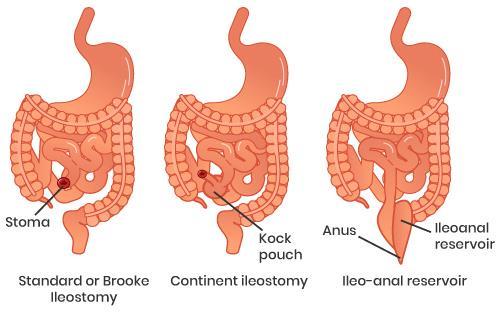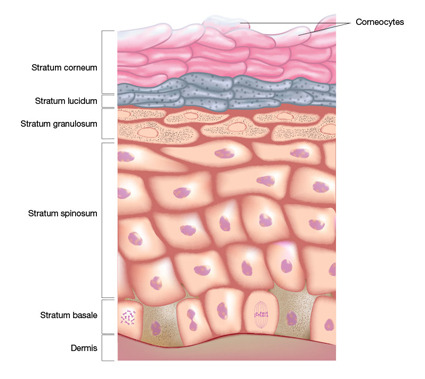Don't wanna be here? Send us removal request.
Text
Pediatric Ileostomy: Things You May Want To Know
An ileostomy involves the creation of a stoma by bringing the end of the third portion of the small intestine, also known as the ileum, through an incision made in the abdominal wall. During the surgical process, the doctor diverts the small intestine away from the colon. The colon is either removed or bypassed after the creation of the stoma. The stoma is an excretory point from where bodily waste, also known as the stomal output, leaves the body. The patient has to wear an ostomy bag over the stoma to collect the stomal output.

A permanent ileostomy involves the removal of the colon before the creation of the stoma. The nurse will tell you how to take care of your child’s stoma before leaving the hospital.
Ileostomies can be temporary too. These ileostomies allow the diseased part of the colon to heal before the doctor reconnects it with the small intestine.
Stomas come in different shapes and sizes. It can be round or oval, and it may stick out or be flat. It may be red or pink, pretty much similar to the color of your inner cheek. The size of the opening may vary with the loss or gain of weight. Generally, the size of the stoma decreases within the first few weeks after surgery. During that time, it is necessary to measure the stoma regularly to make sure that the ostomy pouch you use fits well around the stoma. The nurse will teach you how to measure the stoma, and how to use that measurement to cut the skin barrier to the size and shape of the stoma.
With no muscles around the stoma, your child will not be able to control when the waste passes through it. An ileostomy evacuates waste in the form of thick liquid, which collects in the ostomy pouch. Parents need to change or empty the ostomy bag when it is full.
When you clean the stoma, you might see a drop of blood while washing. It is normal. The small vessels in the stoma can bleed in the same way your gums can bleed when you brush them. That shouldn’t stop you from washing the stoma, but you are going to have to make sure that you are not using any sharp objects that might result in cuts on the stoma.
Life with an ileostomy
Your child will eventually learn to live with a stoma, but it might be your full-time job to manage his stoma until he gets that knowhow. During the initial weeks after surgery, the stomal output will be more liquid. The waste’s consistency will thicken as your child’s bowel will get used to this diversion.
You will need to pay specific attention to your child’s diet. Make sure that he is well-nourished with the healthy foods that suit his digestive system. You will have to encourage him to increase his water intake too.
It is crucial to be well-informed if you want to manage your child’s ileostomy in the best possible way. For this purpose, you may need to put the contact number of your ostomy care nurse on quick-dial.
1 note
·
View note
Text
Understanding Skin Anatomy: What Does It Mean For Your Peristomal Skin
Your skin is your body’s frontline of defense. In this article, we are going to talk about skin anatomy, and also why it is necessary to take care of your peristomal skin.
It is necessary to talk about skin anatomy and physiology to understand the importance of peristomal skin. Here is what you may want to know about skin anatomy.
Skin anatomy

The outermost layer of the skin, also known as the epidermis, is divided into five layers. It’s a thin layer, but it is tough. The cells that build the structure of this layer of skin are called keratinocytes. These cells move up towards the surface, allowing the cells beneath to replace them. The very top layer of the skin is known as stratum corneum.
The structure of the stratum corneum is similar to bricks and mortar. Cells are the bricks, while the mortar is the intercellular lipid matrix. This intercellular lipid matrix contains ceramide.

The importance of ceramide
The stratum corneum needs to be healthy to maintain a protective skin barrier. Healthy skin has healthy levels of ceramide. The lack of this substance can result in dry skin and several other skin infections, which may also include peristomal skin complications (PCS).
Your skin and pH levels
When it comes to skin health, not many people think of pH levels, but the fact of the matter is that pH levels arm the skin with the capability to fight against infections and environmental stress.
The pH value of healthy skin ranges between 4.0 and 6.0, meaning that it is mildly acidic. This pH environment maintained by the skin is known as the acid mantle. It is this environment that makes the skin capable of being a protective barrier. Any disturbance in this pH level can compromise the skin’s ability to protect itself, leading to irritation and damage.
Peristomal skin complications
The severity of PSCs can range from mild to moderate to severe. Mild cases involve skin redness, itching, or discomfort, but the skin will still be intact. In severe cases, there can be a breakdown of skin, resulting in the skin’s weeping, ulcerations, pain, and bleeding. Apart from the pain and discomfort, PSCs can also cause an overall poor quality of life. Avoiding these complications should be the utmost priority of the people with ostomies.
That said, it is crucial for people with ostomies to understand the impact of skin complications on their ostomy care regimen.
1 note
·
View note